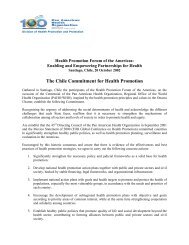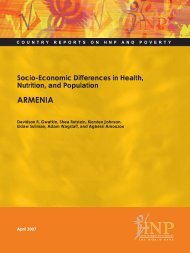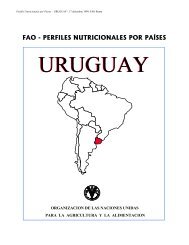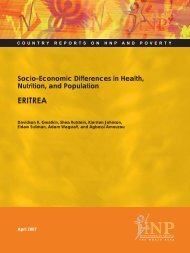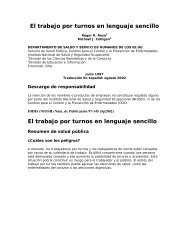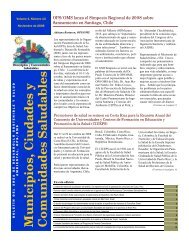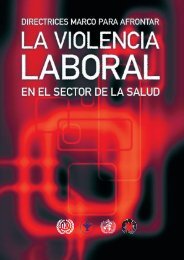Guidelines for drinking-water quality. Volume 1 - BVSDE
Guidelines for drinking-water quality. Volume 1 - BVSDE
Guidelines for drinking-water quality. Volume 1 - BVSDE
You also want an ePaper? Increase the reach of your titles
YUMPU automatically turns print PDFs into web optimized ePapers that Google loves.
- not known or uncertain<br />
a Detection period <strong>for</strong> infective stage in <strong>water</strong> at 20°C: short, up to 1 week; moderate, 1 week<br />
to 1 month; long, over 1 month.<br />
b When the infective stage is freely suspended in <strong>water</strong> treated at conventional doses and<br />
contact times. Resistance moderate, agent may not be completely destroyed.<br />
c Dose required to cause infection in 50% of health adult volunteers; may be as little as one<br />
infective unit <strong>for</strong> some viruses.<br />
d From experiments with human volunteers (see section 2.1.7)<br />
e Main route of infections is by skin contact, but can infect immunosuppressed or cancer<br />
patients orally<br />
There are a number of unconfirmed reports of adverse health effects caused by algal toxins in<br />
<strong>drinking</strong>-<strong>water</strong>, including an epidemiological study of mild, reversible liver damage in hospital<br />
patients receiving <strong>drinking</strong>-<strong>water</strong> from a reservoir with a very large toxic bloom of Microcystis<br />
aeruginosa. Only activated carbon and ozonation appear to remove or reduce toxicity; however,<br />
knowledge is impeded by the lack of suitable analytical methods. There are insufficient data to<br />
allow guidelines to be recommended, but the need to protect impounded surface <strong>water</strong> sources<br />
from discharges of nutrient-rich effluents is emphasized.<br />
2.1.5 Nuisance organisms<br />
There are a number of diverse organisms that have no public health significance but which are<br />
undesirable because they produce turbidity, taste and odour, or because they appear as visible<br />
animal life in <strong>water</strong>. As well as being aesthetically objectionable, they indicate that <strong>water</strong><br />
treatment and the state of maintenance and repair of the system are defective. Examples include:<br />
- seasonal blooms of cyanobacteria and other algae in reservoirs and in river <strong>water</strong>s, impeding<br />
coagulation and filtration and causing coloration and turbidity of <strong>water</strong> after filtration;<br />
- in <strong>water</strong>s containing ferrous and manganous salts, oxidation by iron bacteria, causing rustcoloured<br />
deposits on the walls of tanks, pipes and channels, and carry-over of deposits in the<br />
<strong>water</strong>;<br />
- microbial corrosion of iron and steel pipes by iron and sulfur bacteria;<br />
- production of objectionable tastes and odours, with a low threshold, e.g., geosmin and 2-<br />
methylisoborneol by actinomycetes and cyanobacteria;<br />
- colonization of unsuitable non-metallic fittings, pipes, jointing com-pounds and lining<br />
materials by microorganisms able to utilize leached organic compounds;<br />
- microbial growth in distribution systems encouraged by the presence of biodegradable and<br />
assimilable organic carbon in <strong>water</strong>, often released by oxidative disinfectants (chlorine,<br />
ozone); this growth may include Aeromonas spp., which can produce false positive reactions<br />
in the coli<strong>for</strong>m test;<br />
- infestation of <strong>water</strong> mains by animal life, feeding on microbial growth in the <strong>water</strong> or on<br />
slimes, <strong>for</strong> example crustacea (Gammarus pullex, Crangonyx pseudogracilis, Cyclops spp.,<br />
and Chydorus sphaericus), Asellus aquaticus, snails, mussels (Dreissena polymorpha),<br />
bryozoa (Plumatella), Nais worms, nematodes, and larvae of chironomids (Chironomus spp.)




